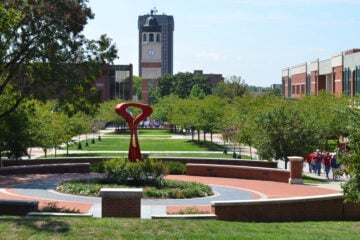Why public media should be partnering on statewide education

PBS39
A screenshot from the introduction to a PBS39 "Lehigh Valley Reads" promo.
When it became apparent that Lehigh Valley Pennsylvania children would not go back to the classroom, PBS39 was one of the very first stations to leverage 50-plus years of experience in educational programming to curate the distance-learning initiative Lehigh Valley Learns. Though now it has become a necessity for public media stations across the country to provide some sort of distance-learning tools for the communities they serve, being one of the first to sit at the table with educators was truly an honor.
If you are still working on your remote-learning program or working through partnerships with state and government officials, here are the most important reasons public media stations should continue to partner on statewide curriculum.
1. Ease apprehension among teachers
When we first engaged educators about this initiative in early March, many were inherently apprehensive about feeling connected to their students. Distance learning not only highlights a massive technology gap between communities, but it places a new burden on students with special needs who would otherwise be getting one-on-one and hands-on attention in the classroom.
When talking to administrators, all expressed explicit concern for their teachers and how best to support them through this evolving educational landscape. Our role as public media stations is to dial into those issues and ensure educators that, through engaging students in our publicly broadcasted programming, they will feel more connected.
2. Earn credibility from state officials
At PBS39, we were able to create a program template that helped the Pennsylvania Department of Education define our role as a supplemental learning program for local districts around the Lehigh Valley. The PDE has been extremely supportive in bringing partners together to collaborate around distance learning statewide — in fact, WITF in Harrisburg was the station that connected PBS39 to PDE and brought amazing collaborative ideas to the table at the beginning of this initiative. Public media has long been trusted for rich educational resources, but now, given our partnership with the PDE, we have become an even more credible source of support for the school districts and families we serve.
3. Access for all
Administrators across the country are addressing equity during a historic moment in education. In launching Lehigh Valley Learns, our conversations revolved around redefining our roles alongside educators. We understood, for example, that 40% of the students in Allentown did not have access to the internet or a computer — making over-the-air broadcasts the perfect solution. In aligning our educational PBS programming with grade-level curriculum in English Language Arts, Math, Science and Social Emotional Learning for grades K–5, we felt like we had the perfect recipe for success in reaching nearly 100% of our community.
4. Avoid academic slide
The extended pause of in-school instruction is known to result in academic “slide” during the summer if students are not given the opportunity to practice ELA and math skills daily. The projections during this crisis are suggesting that students may retain 70% of their ELA skills and only 50% of their math skills.
The answer is to prevent that opportunity for “slide” by giving all parents, caregivers and students access to engaging educational materials. We know early literacy has proven to correlate directly to graduation rates, making continued educational engagement even more important for early learners.
5. Help improve social-emotional progress
Providing students a structured learning routine with predictable expectations will help them have a sense of comfort and control, especially during this disruptive time. It is extremely important to build a schedule that creates a routine for doing schoolwork at home.
We took this into account when working with educators to partner on Lehigh Valley Learns. That’s why each grade level has 2 ½ hours of educational programming at the same time each day. We have already heard a positive response from our community. One local parent called to tell us how her fifth-grader is extremely dedicated to the programming weekly. Although they don’t have a computer, they have found the public broadcast to be a great structure in their home.

Today and into the future, public media stations should continue to look for ways to use government funding to pour support and resources back into the communities they serve. Through this continuous support, PBS39 is working on even more programming dedicated to educational topics such as child trauma, scheduling, mindfulness for stress, and managing behaviors. We are even looking to schedule a multidistrict virtual graduation ceremony into our programming lineup.
This is education like we’ve never seen before, and though it might take trial and error, public media stations across the country should continue to be there through it all.
This commentary has been updated with information about WITF’s involvement in the initiative.
Yoni Greenbaum is Chief Content Officer at Lehigh Valley Public Media, home to PBS39 and WLVR News, based in Bethlehem, Pa. Previously, he was Director of Integrated Media for NBCUniversal and Telemundo at WCAU/WWSI in Bala Cynwyd, Pa. He has garnered several awards, including a National Investigative Emmy award, regional Emmy awards and national and regional Edward R. Murrow awards, all for multiplatform work. In 2018 he created the PBS39 Reporter Corps team, hired a dozen journalists and launched PBS39 News Tonight.





